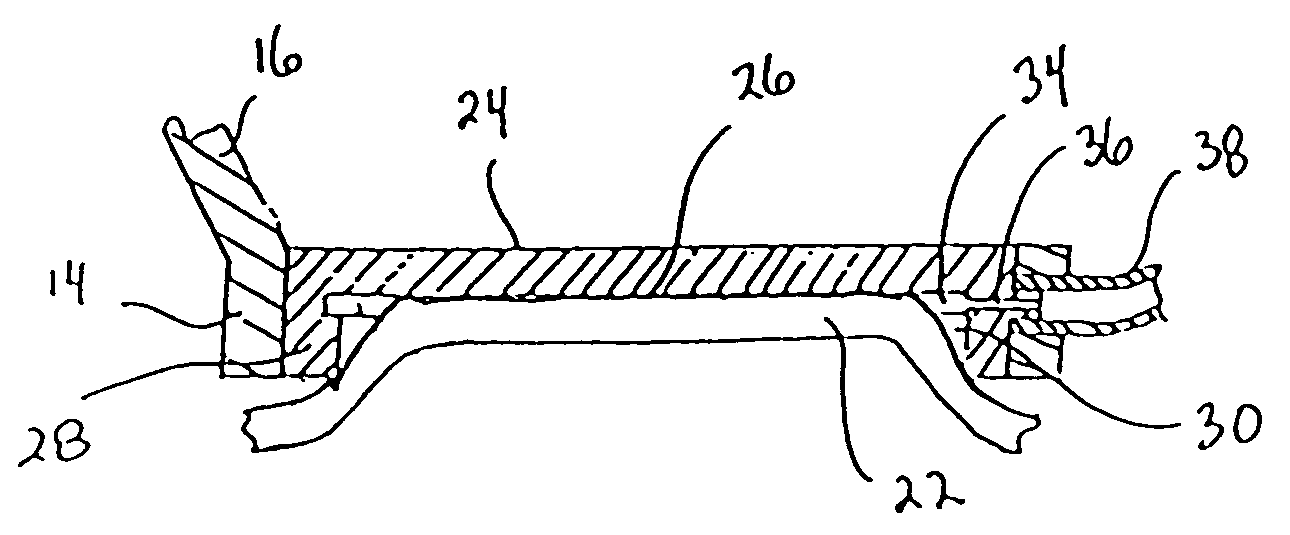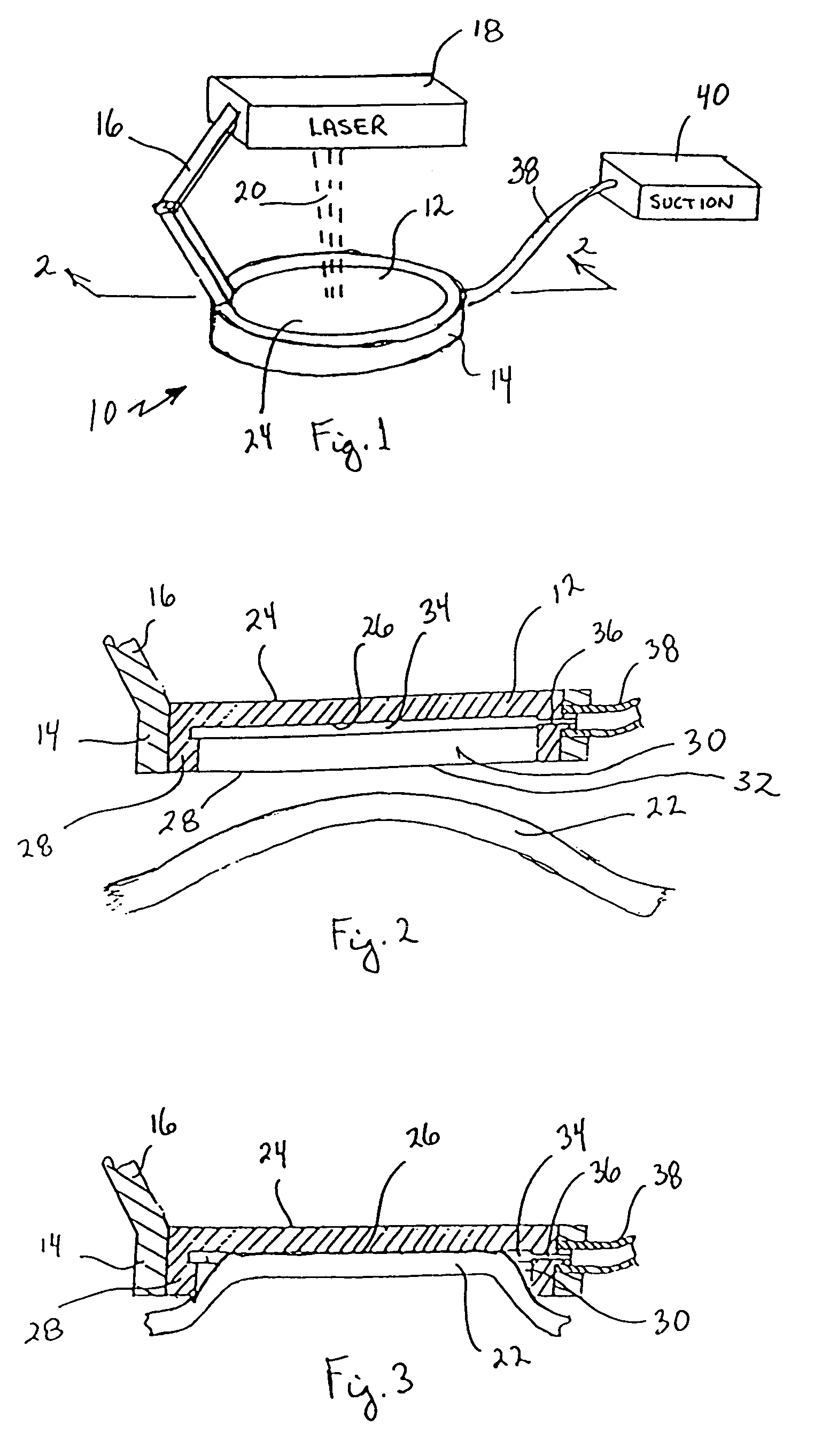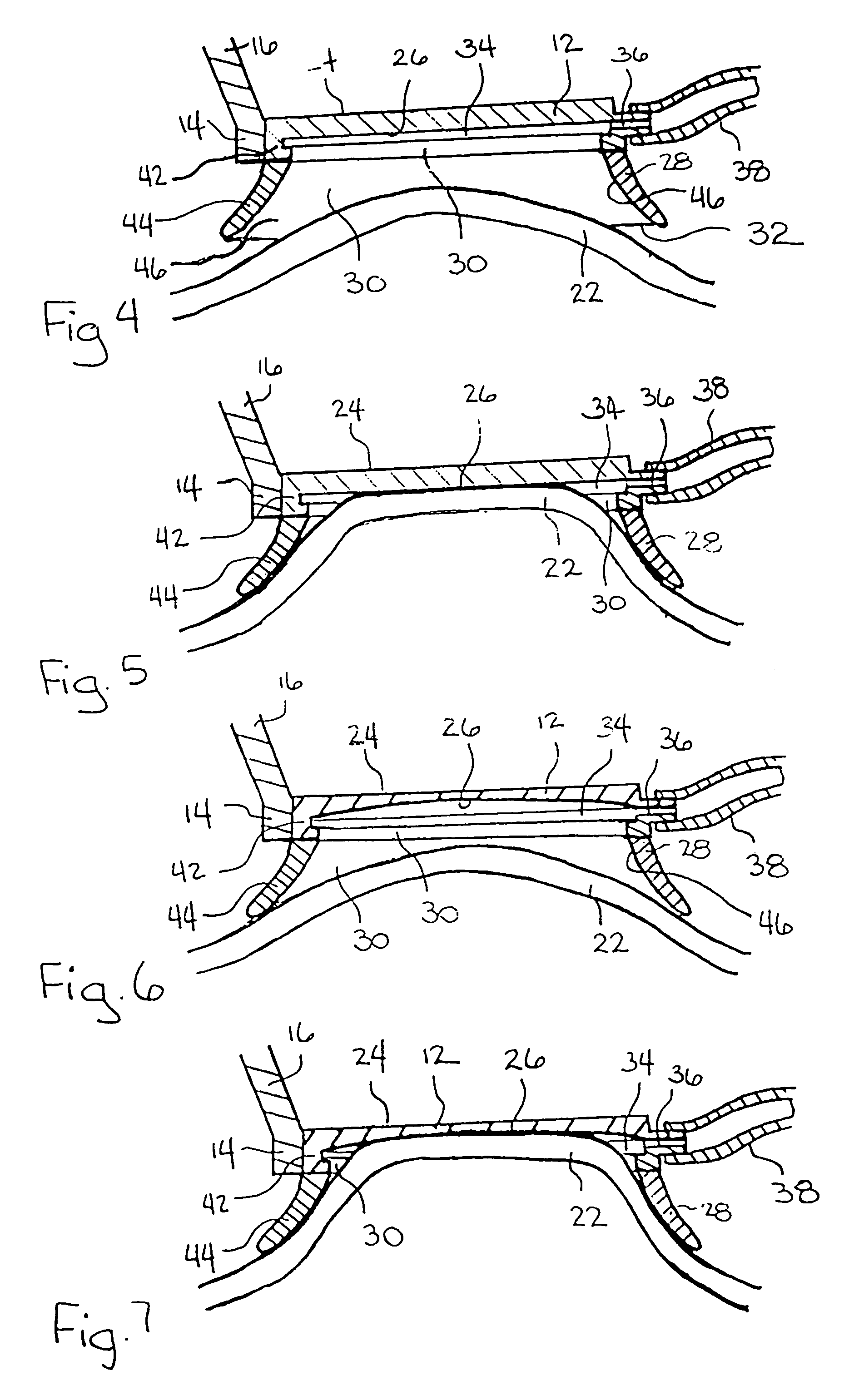Device and method for reducing corneal induced aberrations during ophthalmic laser surgery
a technology of ophthalmic laser surgery and device, applied in the field of surgical devices, can solve the problems of beam distortion, loss of focal spot definition, etc., and achieve the effect of reducing or eliminating optical aberrations
- Summary
- Abstract
- Description
- Claims
- Application Information
AI Technical Summary
Benefits of technology
Problems solved by technology
Method used
Image
Examples
Embodiment Construction
[0026]Referring initially to FIG. 1, a lens system in accordance with the present invention is shown and generally designated 10. As shown, the system 10 includes a lens member 12 which is mounted on a retainer ring 14. Further, the retainer ring 14 is adjustably connected via an extension arm 16 to a laser source 18. For purposes of the present invention, the laser source 18 is activated to generate a laser beam 20 which is directed through the lens member 12. As will become more apparent with further disclosure, the lens member 12 is configured to eliminate, or substantially reduce any spherical aberration or coma that may otherwise have been caused by the spherical nature of the cornea 22 of an eye.
[0027]The actual structure of the lens member 12 will perhaps be best appreciated by reference to FIG. 2 wherein it will be seen that the lens member 12 is formed with an anterior surface 24 and a contact surface 26. It is to be appreciated that the anterior surface 24 can be substanti...
PUM
 Login to View More
Login to View More Abstract
Description
Claims
Application Information
 Login to View More
Login to View More - R&D
- Intellectual Property
- Life Sciences
- Materials
- Tech Scout
- Unparalleled Data Quality
- Higher Quality Content
- 60% Fewer Hallucinations
Browse by: Latest US Patents, China's latest patents, Technical Efficacy Thesaurus, Application Domain, Technology Topic, Popular Technical Reports.
© 2025 PatSnap. All rights reserved.Legal|Privacy policy|Modern Slavery Act Transparency Statement|Sitemap|About US| Contact US: help@patsnap.com



